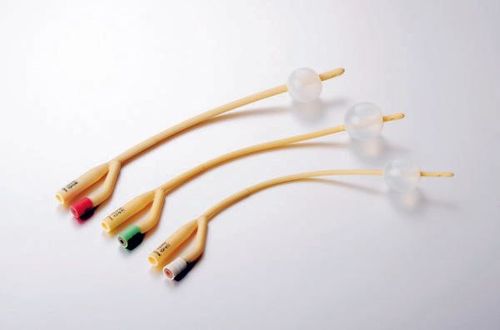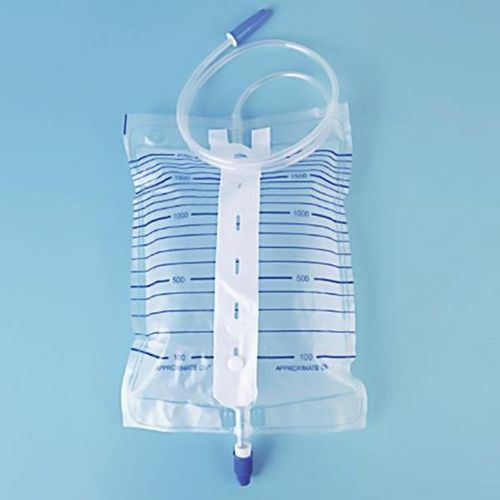This is an automatically translated article.
The article was professionally consulted with Master, Doctor Le Phuc Lien - Urologist - Department of General Surgery - Vinmec Central Park International General Hospital.A urinary catheter is used to help urine pass out of the body when the patient is unable to urinate on their own. There are many reasons patients are indicated for urinary catheterization such as after surgery, cancer treatment or blocked urethra. Because the catheter is placed directly from the outside of the body into the bladder, it can lead bacteria into the body to cause urinary tract infections. So how should a patient with a urinary catheter be cared for?
1. In which cases should a urinary catheter be placed?
The doctor may recommend oligotomy if the patient has:Urinary incontinence Reasons why the patient cannot urinate on their own include:
Urine flow is blocked due to bladder stones or stones. kidneys, blood clots in the urine, or an enlarged prostate gland People who have had prostate surgery Surgery in the genital area, such as repairing a hip fracture or having a hysterectomy Bladder nerve damage Spinal cord injury live Have a mental disorder such as dementia Drugs that weaken the bladder muscles' ability to contract, causing urine to get stuck in the bladder Spina bifida
2. How to clean the urinary catheter?
One of the most common types of urinary catheter is the Foley catheter, which consists of one end that goes through the urethra and into the bladder, and the other end has two branches: (1) one is used to inflate the balloon. to secure the urinary catheter in the bladder and (2) a branch that connects to the urine bag.It is best to clean the catheter twice a day, once in the morning and once in the evening. You need to prepare:
Clean cloth Clean towel Soap Warm water Then you can follow these seven steps:
Wash your hands with cotton and warm water. Hold the catheter in place with one hand to prevent you from pulling on the catheter, causing pain to the patient. With the other hand, take the soapy cloth and wipe the catheter. Wipe starting from where the catheter enters the body and wipe down the drainage bag. This technique helps you limit the introduction of bacteria from the tube into the body. Use another soapy cloth to clean the area around the catheter. For men, the place to start entering the body is from the top of the penis, so when cleaning, wipe from the top to other areas, remember to clean the foreskin and do not wipe in the opposite direction. For women, the position starts from where the catheter enters the urethra, you need to clean the vulva, wipe back to the patient's anus and do not wipe in the opposite direction.

Ống thông tiểu nên được vệ sinh sạch sẽ, tránh nhiễm trùng
6. Discard used towels. Do not reuse used towels until they have been cleaned.
7. Wash your hands again.
When you clean, if you notice signs of infection around the place where the catheter entered, such as swelling, redness, pus or pain, call your doctor or nurse for assistance.
3. How to change the urine bag
The patient can wear a leg drainage bag during the day and a urine bag at night when going to bed. You will need the following:A clean urine bag Soap Two alcohol pads To exchange a urine bag, follow these eight steps:
Wash your hands with soap and water. Use two fingers to grasp the top of the new urine bag. Remove the bag containing the urine. Wipe the tip of the catheter with the first alcohol pad. Wipe the top of the new bag with a second alcohol pad. Connect the end of the catheter to the end of the urine bag. Check the catheter wire for no bends or twists. Wash your hands again.
4. How to clean the urine bag
Once you have changed the bag, you can clean it again before using it again. You need to prepare the following:Cold and cold water Soap water White vinegar Then you can follow these nine steps:
Wash your hands with soap and warm water. Wash the inside of the bag with soap and cool water (hot water can damage the bag). Rinse the bag with cool water to remove all the soap. Mix 1 cup of cool water with 1 cup of white vinegar. Pour the vinegar solution into half of the urine bag and then shake it. Let the bag sit for 15 to 30 minutes. Drain off the vinegar and rinse with cool water. Hang the bag upside down and keep it in a dry place. Wash your hands again.

Bên cạnh đó, túi đựng nước tiểu cũng cần được vệ sinh sạch sẽ
5. General Instructions
Follow these general guidelines to keep the catheter clear of blockages and reduce the risk of infection for the patient:Regularly check the tube for bends or twists that make it difficult or impossible for urine to flow out. Do not use any creams or powders applied or sprayed around the site of the catheter entering the body. Drain the urine after 2 to 4 hours or when the urine is half full. Hold the urine bag lower than the patient's bladder to help urine drain easily. Wash your hands before and after touching the urine bag.
Please dial HOTLINE for more information or register for an appointment HERE. Download MyVinmec app to make appointments faster and to manage your bookings easily.
Reference source: Healthline.com; Webmd.com












